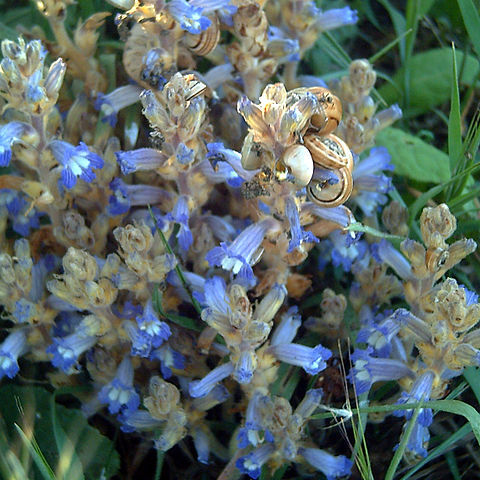Parasitic on many hosts, especially Lycopersicon, Cannabis, and Nicotiana; stems slender, 1–3 dm, usually with 1 or 2 branches; spikes slender, rather loose and open, the axis often exposed; cal-tube broad, equaling or a little shorter than the 4 equal, caudate-acuminate lobes (a minute fifth lobe rarely developed); cor 12 mm, the tube pale yellow, the limb blue; 2n=24. Native of Europe and w. Asia, rarely intr. in our range, as in Ky.
Yellowish, achlorophyllous, thinly glandular-hairy root parasite to 30 cm, often branched. Leaves scale-like. Flowers in a spike, blue-mauve, calyx acutely 4-lobed, subtended by 2 thread-like bracteoles.
Flowers mauve-blue or pale yellow with a blue lip
A herb with pale yellow stems about 1 ft. high

